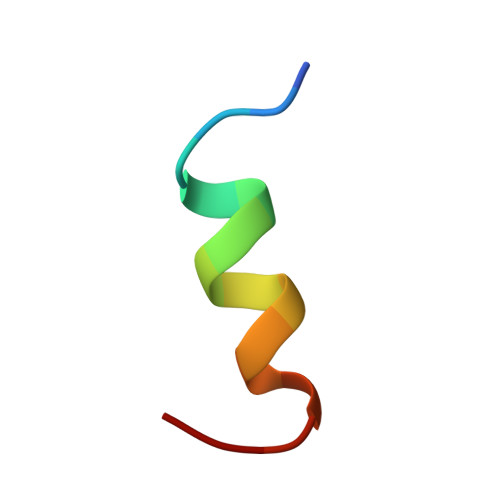Structural basis for retinoic x receptor repression on the tetramer.
Zhang, H., Chen, L., Chen, J., Jiang, H., Shen, X.(2011) J Biol Chem 286: 24593-24598
- PubMed: 21613212
- DOI: https://doi.org/10.1074/jbc.M111.245498
- Primary Citation of Related Structures:
3R29, 3R2A - PubMed Abstract:
Retinoic X receptor (RXR) is a master nuclear receptor in the processes of cell development and homeostasis. Unliganded RXR exists in an autorepressed tetramer, and agonists can induce RXR dimerization and coactivator recruitment for activation. However, the molecular mechanisms involving the corepressor recruitment and antagonist-mediated repression of RXR are still elusive. Here we report the crystal structure of RXRα ligand-binding domain (LBD) complexed with silencing mediator for retinoid and thyroid hormone receptors (SMRT) corepressor motif. As the first structural report on the unliganded nuclear receptor bound to the corepressor motif, RXRαLBD-SMRT exhibits a significant structural rearrangement, compared with apoRXRαLBD tetramer. To elucidate further the molecular determinants for RXR repression by its antagonist, we also determine the crystal structure of RXRαLBD-SMRT complexed with the identified antagonist rhein. In the structure, two rhein molecules and two SMRT peptides are in the RXRαLBD tetramer, different from the case in RXRαLBD-SMRT structure, where four SMRT peptides bind to RXRαLBD tetramer. It seems that rhein induces a displacement of SMRT motif by activation function 2 (AF-2) motif binding to the receptor. Combining our current work with the published results, structural superposition of RXRαLBDs in different states reveals that RXR uses an overlapped binding site for coactivator, corepressor, and AF-2 motifs, whereas the AF-2 motif adopts different conformations for agonist or antagonist interaction and coactivator or corepressor recruitment. Taken together, we thus propose a molecular model of RXR repression on the tetramer.
Organizational Affiliation:
State Key Laboratory of Drug Research, Shanghai Institute of Materia Medica, Chinese Academy of Sciences, 555 Zuchongzhi Road, Shanghai 201203, China.















